Nemadji Pottery: History, Marks & Pricing Guide
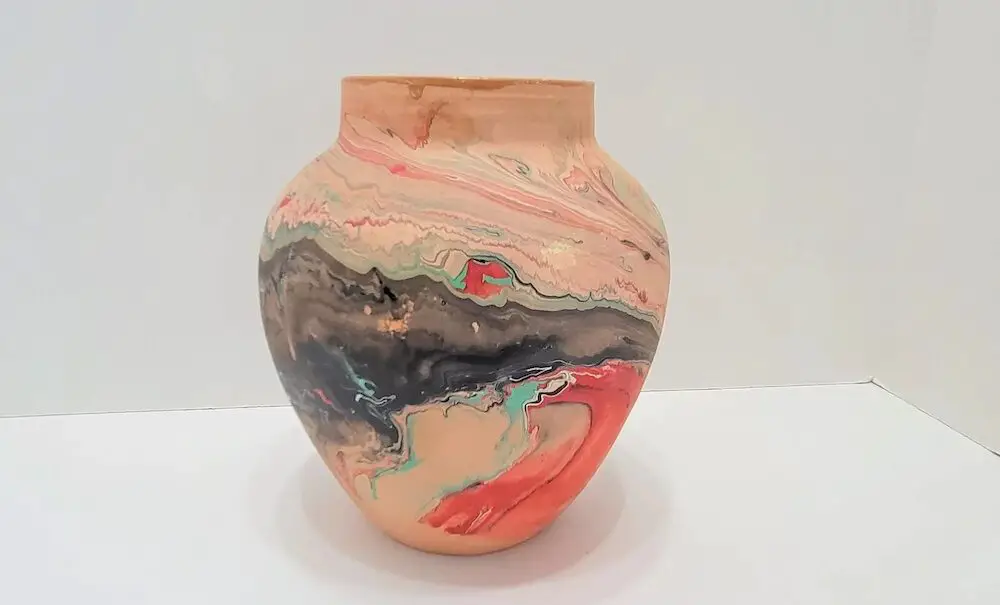
Nemadji pottery comes from the Arrowhead region in Minnesota and is touted to be Indian pottery. However, unlike popular belief, there is nothing “Indian” about it. Though the pottery looks good and is made from “native soil”, it is most definitely not made by American Indian tribes.
This article takes a look at the colorful history of the equally colorful Nemadji property. Read on for more information.
Table of Contents
What is Nemadji Pottery?
Nemadji pottery is unglazed rustic pottery with colorful swirled designs on the outside. No two pieces of pottery look alike, they all have unique colors. The outside of the pottery is unglazed, though the inside may be highly glazed. You get all kinds of shapes in Nemadji pottery from vases to vessels and bowls.
The pottery looks very attractive and comes from the Arrowhead area in Minnesota. Though the pottery is said to be influenced by native American Indian pottery from the region, the fact is that it was never made by native American Indians. Nemadji pottery has a fairly colorful and chequered history.
Nemadji Pottery History
Nemadji means “left-handed” in the local Ojibway Indian language. Perhaps it was used to describe the direction of the river. The Nemadji pottery was introduced to the market by the Nemadji Tile & Pottery Company of Moose Lake, Minnesota.
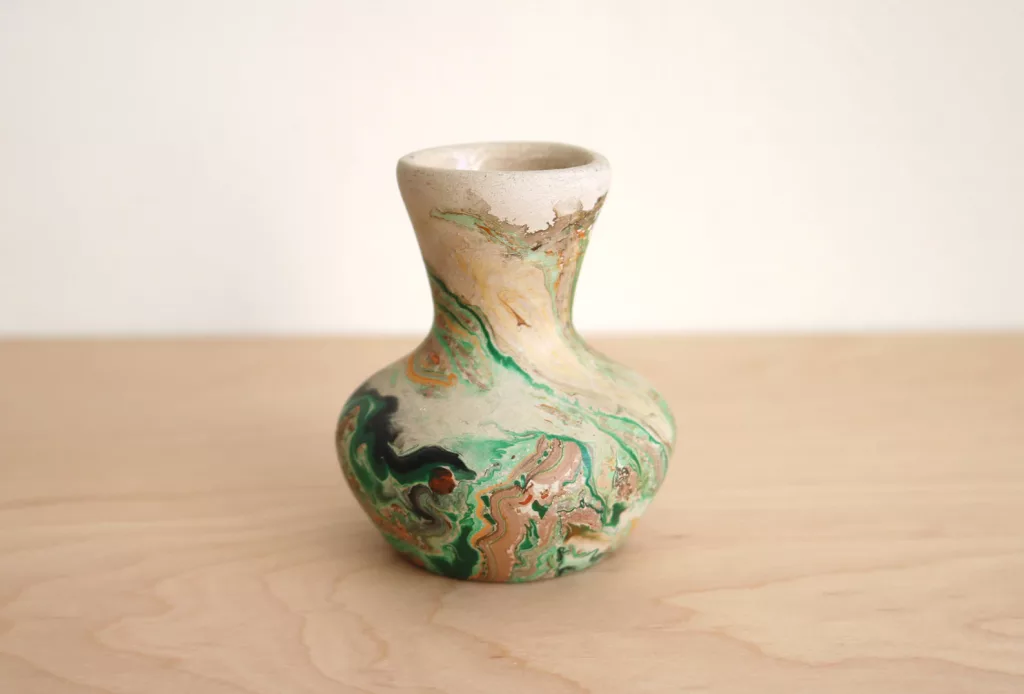
This company started in 1923, with the express purpose of making tiles. However, in the crash of 1929, the company was sold to another owner. The new owner decided to make pottery to cater to the tourist market that had a great demand for Indian artifacts.
Since Nemadji sounded like an Indian tribe name, most people were attracted to the pottery thinking it was genuine native American Indian pottery. Very cleverly the company positioned the pottery as “inspired” by native American Indian designs. The tourists just lapped it up. Later the company moved to Kettle River, Minnesota.
The idea for the colorful Nemadji pottery came from a Danish immigrant, Eric Hellman. Eric was an employee of the company and he inspired the idea of coloring the artifacts using simple house paints. The Nemadji company was resold in 1980 when it stopped making tiles. It was formally shut down in 2001.
Nemadji Pottery Origin. Where Does it Come From?
Nemadji pottery was first made by the Nemadji Tile & Pottery Co. and it originated from the arrowhead in Minnesota. It is made from white or colored clay from the region. The pottery is hand thrown and baked in a kiln but left unfinished on the outside.
There are stories that the pottery was inspired by the local native American Indians, but this was perhaps a shrewd marketing technique used to popularize the pottery.
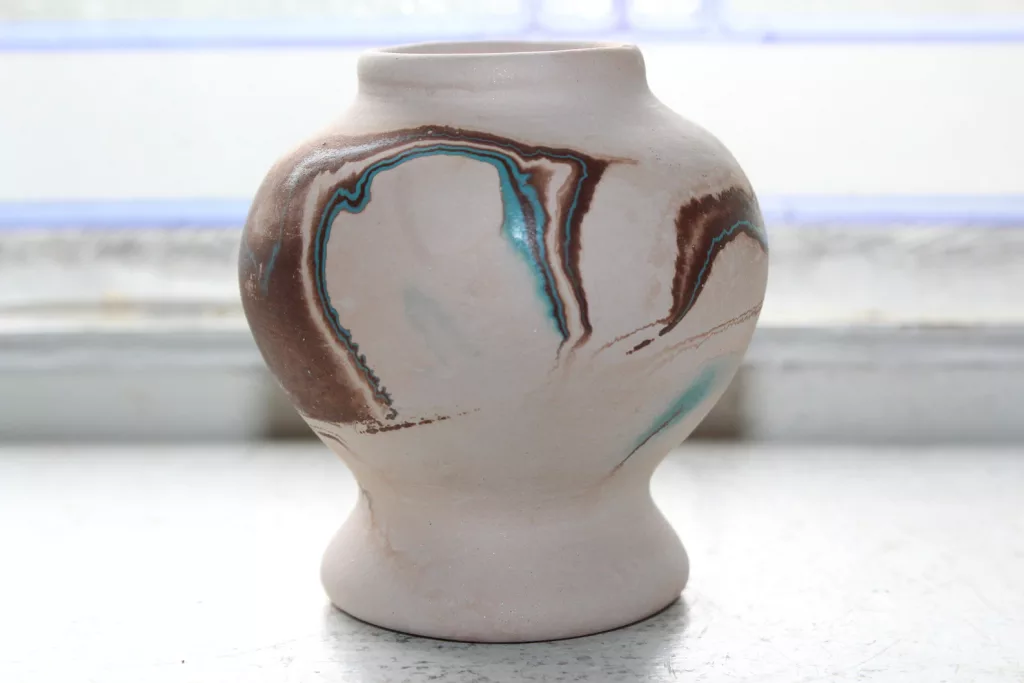
Nemadji Pottery Technology and Designs
The Nemadji pottery was hand thrown and made from white or colored clay from the arrowhead region of Minnesota. It was then fired up in a kiln to harden and was then left in the bisque (unglazed) state. When fired up, it gave an incredibly beautiful look.
Afterward, the pottery was floated on a vat of water with common house paints on the surface separated by vinegar. It was dipped in the paints and was given adequate time for the paint to stick on the surface.
It was swirled a bit to create the unique designs you see on the pottery before it was left to dry. The inner surface of the pottery was lazed so that it could retain water.
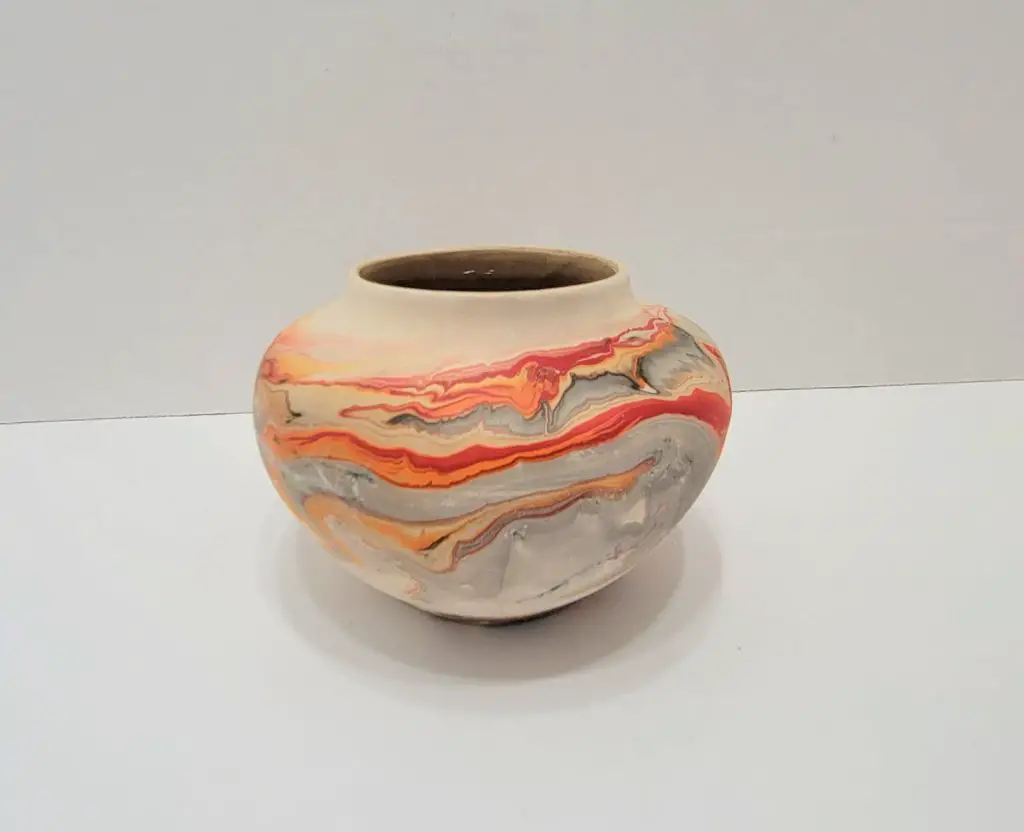
In the 16th century, some Japanese ceramics used to glaze or swirled clays to decorate the pottery with the marble effect. This method was also used in the 19th century by European ceramics. Nemadji pottery production stopped in 2001.
Is Nemadji Pottery Valuable? Nemadji Pottery Price Guide
Initially, this beautiful art piece was very expensive because of its remarkable beauty and the fact that no two pieces were alike. Currently, the Nemadji pottery is widespread and quite affordable.
The price for Nemadji pottery may vary depending on the size of the piece and the design. The price is also determined by the age, condition, and demand for the pottery. There are many places you can buy Nemadji pottery from garage sales in Moose Lake or Kettle River to people selling pieces online on eBay.
Most people have had Nemadji pottery for years and have not realized its value until fairly recently. Nemadji pottery can sell anywhere between $180 up to $150 or more. It all depends on the vintage, condition, size, and demand for the piece.
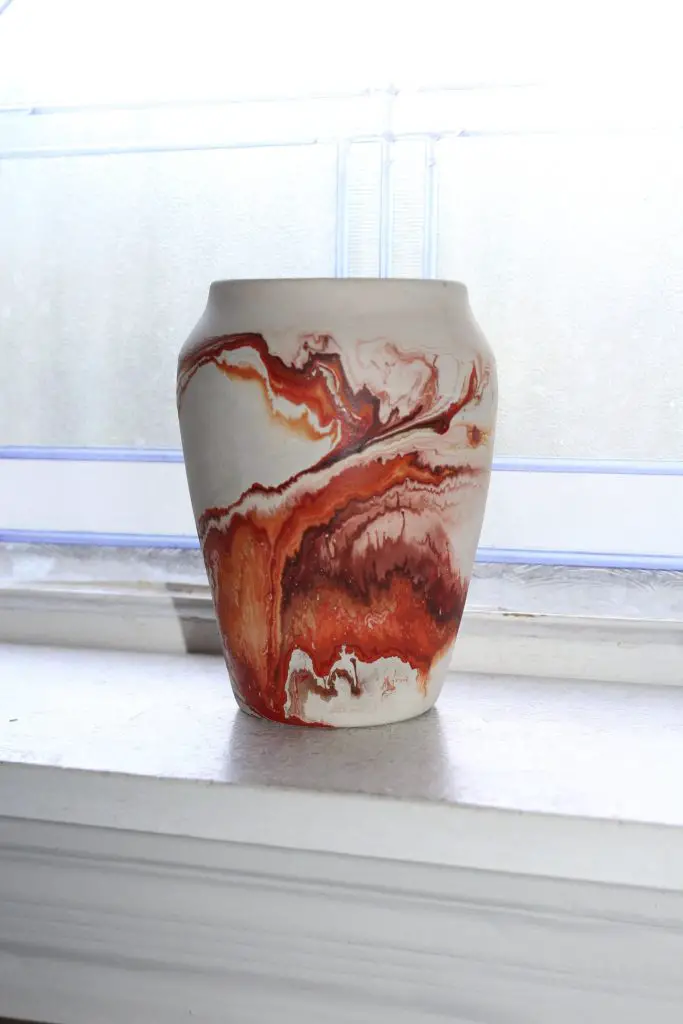
If you own this piece of pottery, you need to work with a valuer to determine its exact value. However, if it’s not very valuable now, then it should be in years to come.
Therefore, you should maintain your pottery in good condition and hold on to it for several years until its value increase. Also, you may want to check with sites like eBay to get more information on the value of your Nemadji pottery piece.
Dating Nemadji Pottery Marks. How to Date Nemadji Pottery?
Nemadji pottery has marks on the underside of the pottery that can give you an idea of the approximate date of the piece of pottery. These marks are specifically placed to help identify the Nemadji pottery.
The pottery marks on the base of the pottery are usually inscribed with the words “Nemadji Pottery”. Some pieces have the picture of a native Indian. The earliest pieces had the picture of an arrowhead in the middle, surrounded by the words Nemadji Pottery. These potteries are considered the most valuable.
Please note that genuine Nemadji pottery would have the words Nemadji pottery written around the border of a circle. Any pottery that says Nemadji pottery in a different format may not be genuine. Make sure to send pictures of your Nemadjo pottery to valuers so that they can give you an estimate of how old your Nemadji pottery is and what it is valued at.
Conclusion
Though Nemadji pottery has nothing to do with any native American Indian tribe, it is very unique and attractive pottery. The designs and look are the selling points for this kind of pottery. Though the company manufacturing this pottery closed down in 2001, there are many pieces of Nemadji pottery floating around on online sites where you can buy a piece of this art.



